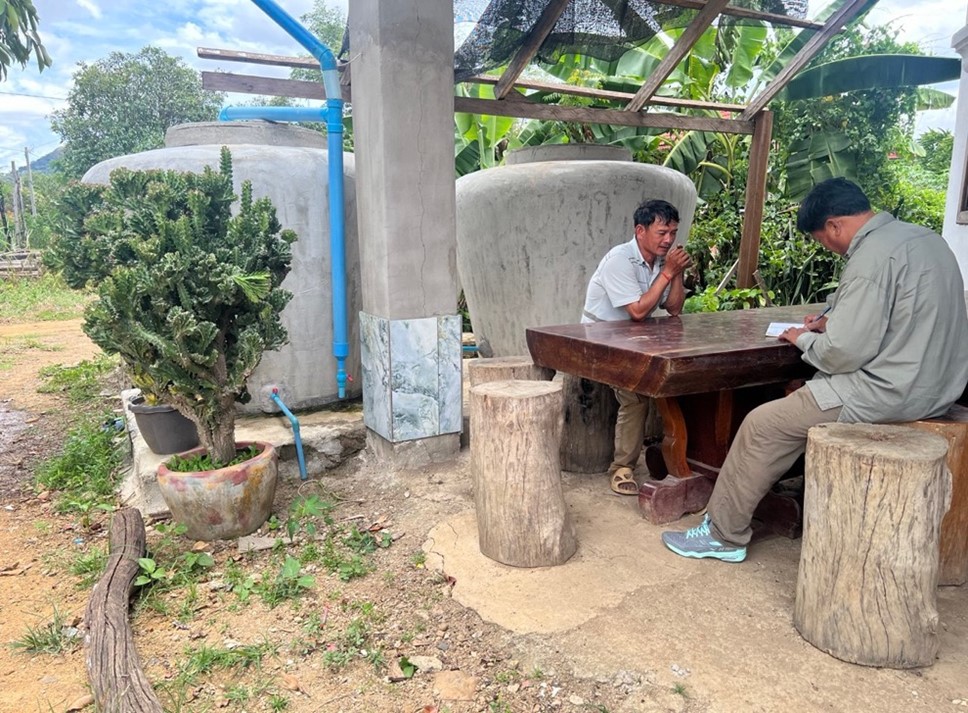
【The follow-up survey by RainWater Cambodia(RWC)】
In order to confirm sustainability and proper O&M of the constructed facilities, the Darvish Yu Water Fund carries out a follow-up survey around two years after the project completion. Please find here the voluntary survey conducted last August by RWC when they noted this matter.
The Power of Rainwater – Supporting the poorest and most marginalized families for access to safe drinking water in Stung Thmei village, Pramouy commune, Veal Veng district, Pursat province, Cambodia
1.Outline of completion report
1)Project site
Stung Thmei village, Pramouy commune, Veal Veng district, Pursat province, Cambodia
2)Number of expected beneficiaries
652
3)Background
- More than 50% of the poorest and most marginalized populations in Cambodia are drinking unsafe water directly from rivers, ponds, and underground water sources. During the dry season they must travel far to fetch water or purchase it from tanker trucks.
- In Stung Thmei village, there are several alternative water sources, including shared pump wells, private ponds, and a major public water source, the Pursat river. However, the underground water contains high levels of iron sediment. The ponds and river have been contaminated by agricultural and chemical wastes flowing in from upstream during the rainy season. Numerous projects have already been carried out, but those located far from the main road have not benefited from support.
4)Project period
July 2024 to January 2025
5)Local partner
RainWater Cambodia(RWC)
6)Main activities of the project
- Construction of 20 risk-managed rainwater harvesting systems for storing water throughout the dry season
- Training for 8 local community members on a rainwater safety plan (WSP)
- Operation & Maintenance training workshops for recipients of 3000L rainwater harvesting jumbo jars
- Awareness campaigns for 25 local residents and 83 school children on the water safety plan
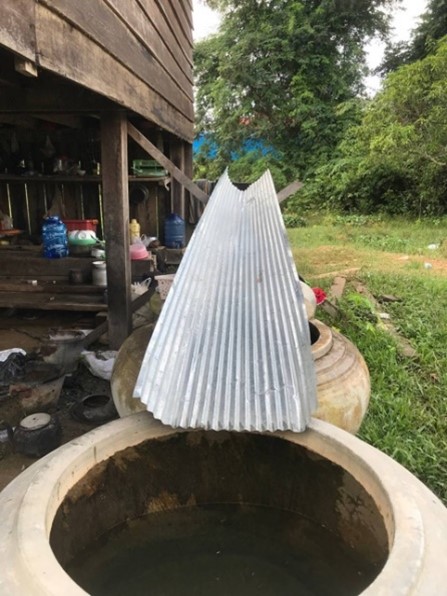
A typical traditional household rainwater harvesting system: open and highly risky
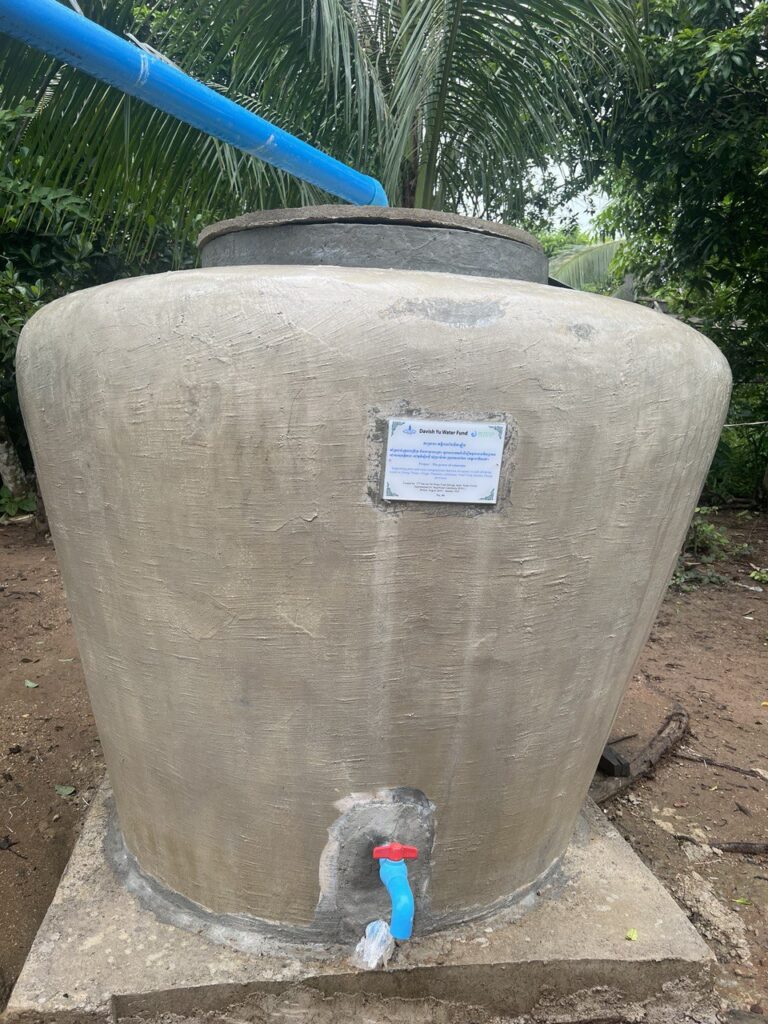
Acompleted system for risk-managed rainwater harvesting: a 3000L jumbo jar
2.Field visit follow-up survey on August 13, 2025
1) Meeting with Mr. Mao Theang (village project focal point)
- He confirmed that the recipient households now have access to clean drinking water and have reduced their water bills.
- Operations and maintenance of the system are getting much attention by the recipient households.
- Following the project, the village focal point installed two jumbo jar rainwater harvesting systems at his home, considering it a beneficial investment of his own funds in order to reduce water purchases.
- There are still number of households expressing interest in and a desire for future investment in rainwater harvesting systems.
2) Inspection of recipient household #15
- Water was available in the storage jar.
- All physical conditions of the system were good and providing water supply.
- Expressed high appreciation of the system.
3) Inspection of recipient household #09
- The team observed the refilling of a 1.5L bottle with rainwater from jumbo jar.
- The lid was not completely covering the jar due to the removal of the downpipe from the first flush system during expansion of the collection roof.
- The RWC team delivered key messages regarding crucial parts of operations and maintenance to the recipient household.
4) Inspection of recipient household #05
- The rainwater harvesting system was mainly being used for drinking and cooking.
- Surface water was being stored in traditional rainwater jars for cleaning and bathing.
- Relatives had returned from Thailand due to the border dispute, increasing water supply demand in the household. The rainwater was being used carefully.
- Operations and maintenance were well adopted. The system had been cleaned three times.
- A filter was added on top of the system for safe drinking water quality.
5)Discussion with principal of Stung Thmei primary school
- At every Monday school meeting, the trained staff members continue to follow up on the key messages of the water safety plan with the children.
- The children have learned about and become aware of the water safety plan, resulting in safe drinking water at the school. They now bring bottled drinking water from home.
【Survey photos】
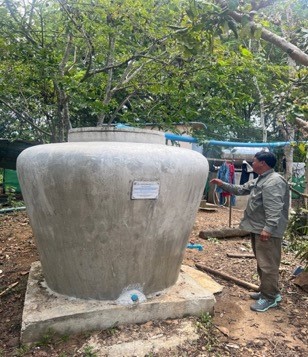
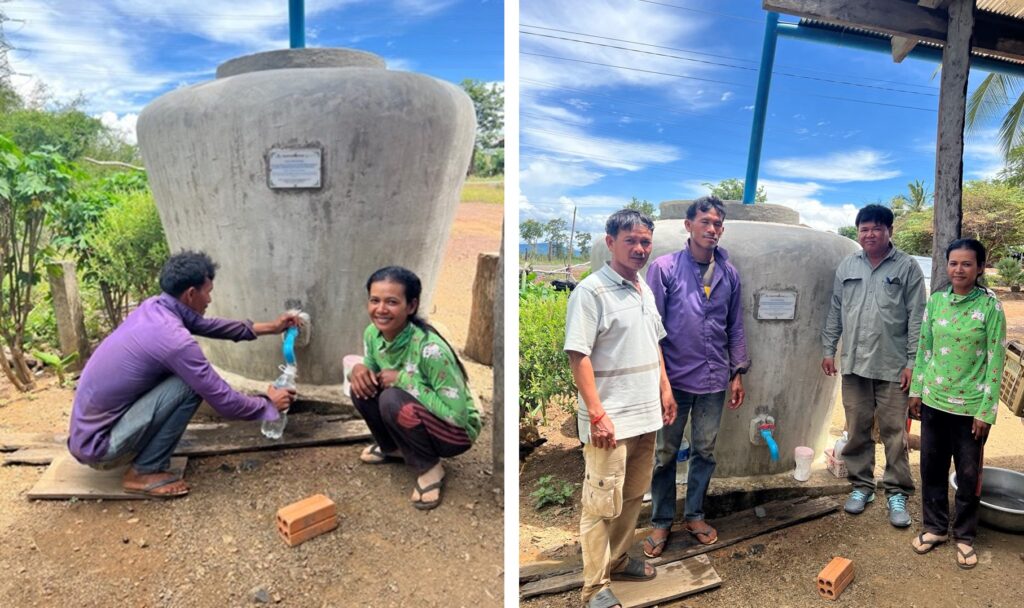
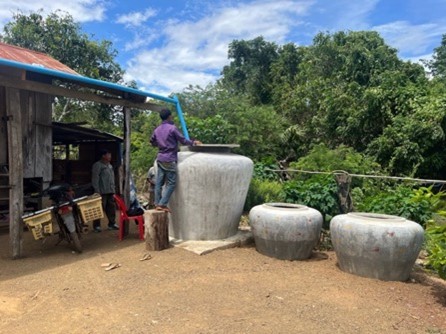
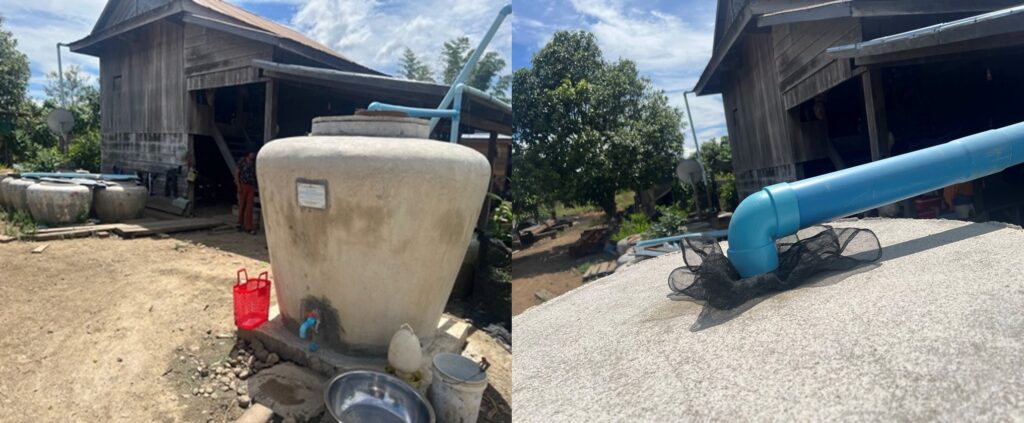
Filtration installed on top of the system (right)
3.Conclusions and further considerations
1)Conclusions
- Knowledge and practices of safe water supply had been well adopted by local residents.
- All infrastructure constructed by the project was in good condition. The recipient households expressed satisfaction.
- The project focal point built 2 rainwater harvesting systems at his own home, confirming further investment by a number of local residents.
2)Further considerations
- Continuous follow-up on support for recipient households regarding operations and maintenance of the system
- More visits to a large number of recipients and communities to assess the level of sustainability and impacts
- Further consideration of the needs of new households migrating from Thailand, not only regarding water supply but also sanitation and food security
【Summary】
The impacts of the projects were greater than our expectation. The village water demand expanded as more people returned from Thailand due to the border dispute. We would like to thank Mr. Darvish Yu, all of our donors, beneficiaries, motivated RainWater Cambodia, and the many others who have contributed to the Fund.
▼ Previous article: 2025.2.27 Completion Report on the 17th Darvish Yu Fund project▼
https://www.waterforum.jp/en/news/22918/
▼ For more information on the Darvish Yu Water Fund: ▼
https://www.waterforum.jp/en/what-we-do/darvish/
(Reported by Takejiro Suzuki, Project Manager)
